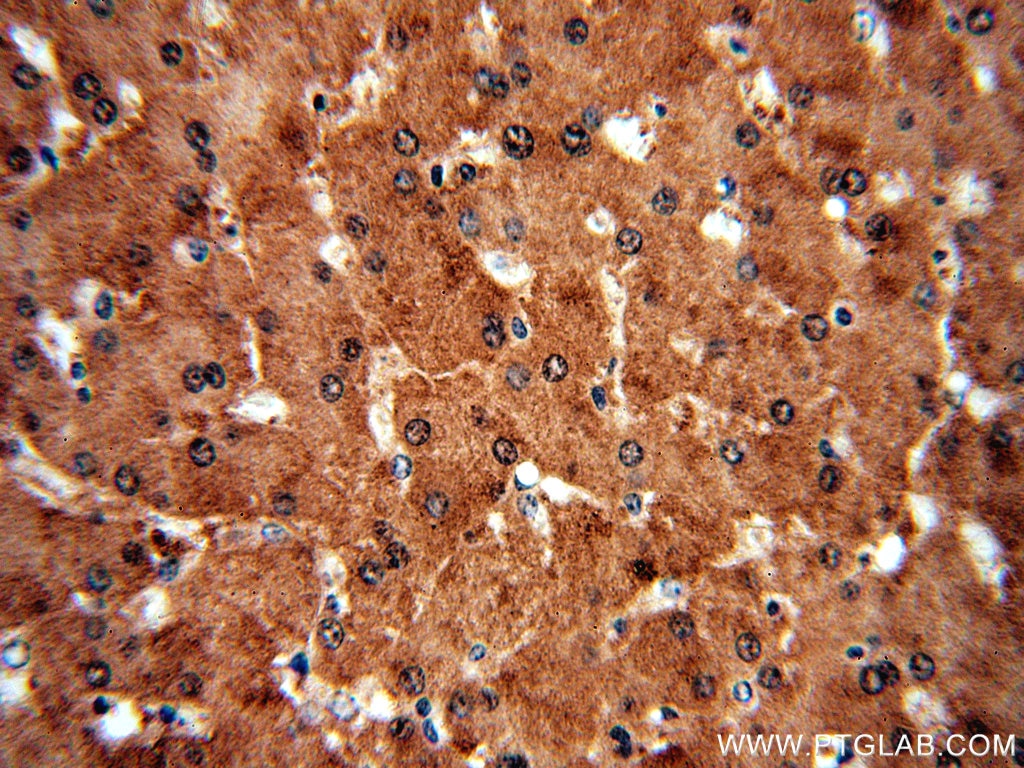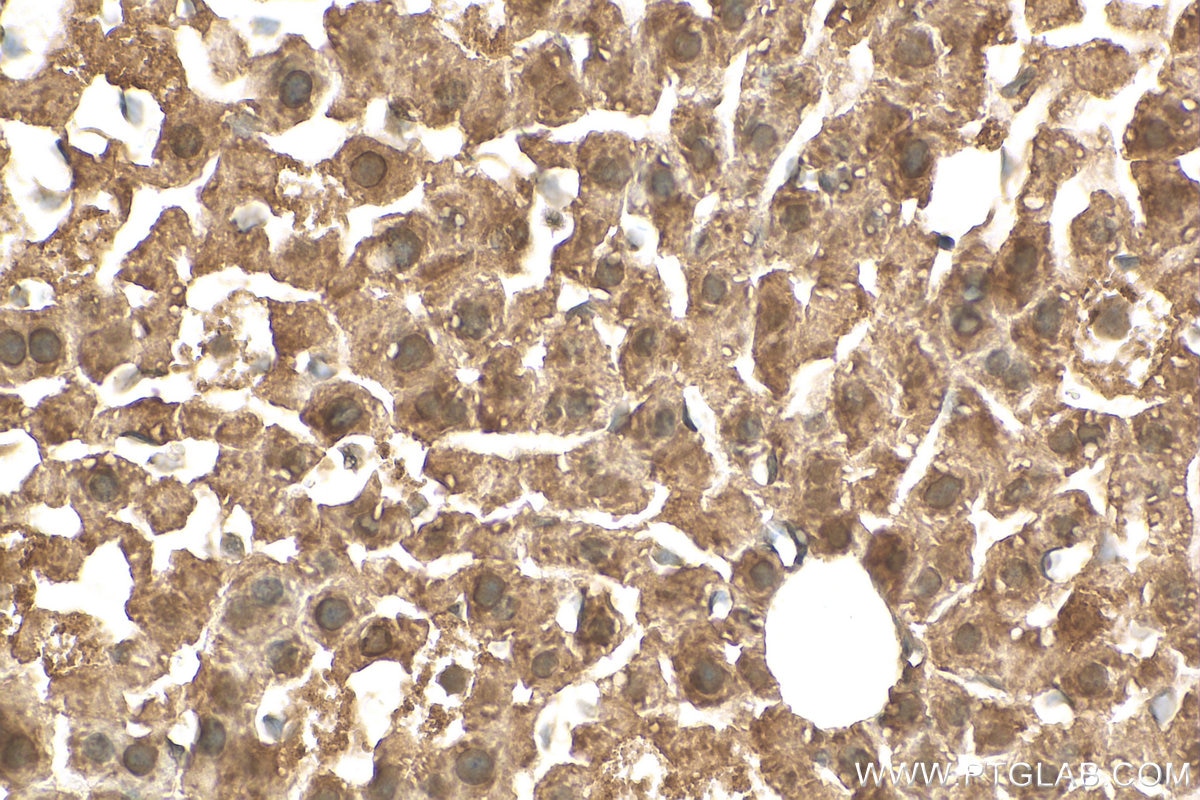- Phare
- Validé par KD/KO
Anticorps Polyclonal de lapin anti-SGMS1
SGMS1 Polyclonal Antibody for WB, IP, IHC, ELISA
Hôte / Isotype
Lapin / IgG
Réactivité testée
Humain, rat, souris
Applications
WB, IP, IF, IHC, ELISA
Conjugaison
Non conjugué
N° de cat : 19050-1-AP
Synonymes
Galerie de données de validation
Applications testées
| Résultats positifs en WB | cellules HT-29, tissu cardiaque humain |
| Résultats positifs en IP | tissu cardiaque de souris |
| Résultats positifs en IHC | tissu hépatique humain, il est suggéré de démasquer l'antigène avec un tampon de TE buffer pH 9.0; (*) À défaut, 'le démasquage de l'antigène peut être 'effectué avec un tampon citrate pH 6,0. |
Dilution recommandée
| Application | Dilution |
|---|---|
| Western Blot (WB) | WB : 1:500-1:1000 |
| Immunoprécipitation (IP) | IP : 0.5-4.0 ug for 1.0-3.0 mg of total protein lysate |
| Immunohistochimie (IHC) | IHC : 1:20-1:200 |
| It is recommended that this reagent should be titrated in each testing system to obtain optimal results. | |
| Sample-dependent, check data in validation data gallery | |
Applications publiées
| KD/KO | See 2 publications below |
| WB | See 5 publications below |
| IHC | See 2 publications below |
| IF | See 3 publications below |
Informations sur le produit
19050-1-AP cible SGMS1 dans les applications de WB, IP, IF, IHC, ELISA et montre une réactivité avec des échantillons Humain, rat, souris
| Réactivité | Humain, rat, souris |
| Réactivité citée | rat, Humain, souris |
| Hôte / Isotype | Lapin / IgG |
| Clonalité | Polyclonal |
| Type | Anticorps |
| Immunogène | SGMS1 Protéine recombinante Ag5246 |
| Nom complet | sphingomyelin synthase 1 |
| Masse moléculaire calculée | 49 kDa |
| Poids moléculaire observé | 25 kDa, 49 kDa |
| Numéro d’acquisition GenBank | BC042899 |
| Symbole du gène | SGMS1 |
| Identification du gène (NCBI) | 259230 |
| Conjugaison | Non conjugué |
| Forme | Liquide |
| Méthode de purification | Purification par affinité contre l'antigène |
| Tampon de stockage | PBS avec azoture de sodium à 0,02 % et glycérol à 50 % pH 7,3 |
| Conditions de stockage | Stocker à -20°C. Stable pendant un an après l'expédition. L'aliquotage n'est pas nécessaire pour le stockage à -20oC Les 20ul contiennent 0,1% de BSA. |
Informations générales
Sphingomyelin synthase (SMS), with two isoforms, SMS1 (SGMS1) and SMS2, is a key enzyme involved in the generation and development of SM. SMS can participate in inflammation, atherosclerosis, proliferation, apoptosis, differentiation and other functions(PMID:30535436). SMS1 is frequently downregulated in various solid cancers, more particularly in melanoma(PMID:31114500). SGMS1 has two isoforms.
Protocole
| Product Specific Protocols | |
|---|---|
| WB protocol for SGMS1 antibody 19050-1-AP | Download protocol |
| IHC protocol for SGMS1 antibody 19050-1-AP | Download protocol |
| IP protocol for SGMS1 antibody 19050-1-AP | Download protocol |
| Standard Protocols | |
|---|---|
| Click here to view our Standard Protocols |
Publications
| Species | Application | Title |
|---|---|---|
FASEB J Sphingomyelin maintains the cutaneous barrier via regulation of the STAT3 pathway. | ||
Exp Neurol Inhibition of sphingomyelin synthase 1 ameliorates alzheimer-like pathology in APP/PS1 transgenic mice through promoting lysosomal degradation of BACE1.
| ||
iScience The Symbiotic Relationship between the Neural Retina and Retinal Pigment Epithelium Is Supported by Utilizing Differential Metabolic Pathways. | ||
Drug Des Devel Ther Involvement of Huanglian Jiedu Decoction on Microglia with Abnormal Sphingolipid Metabolism in Alzheimer's Disease. |








